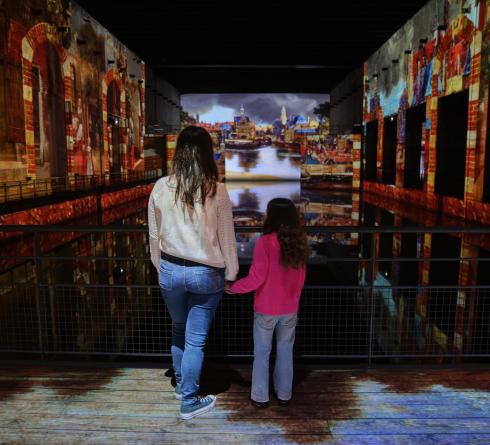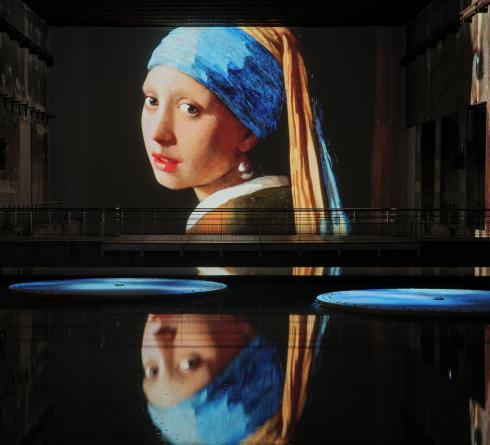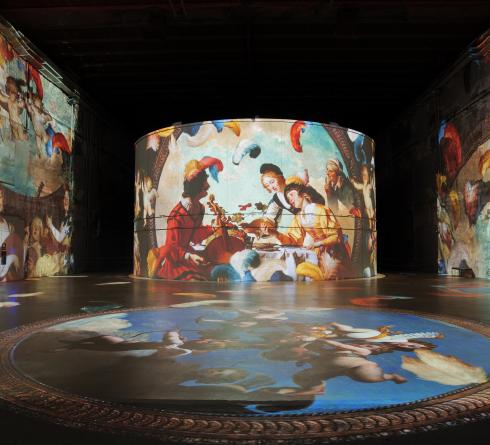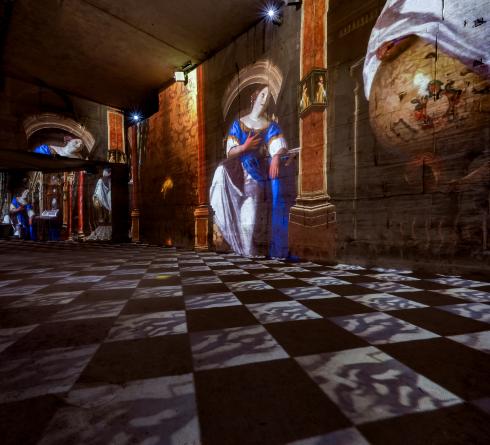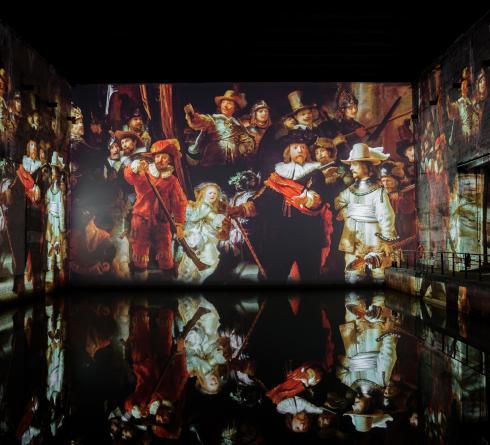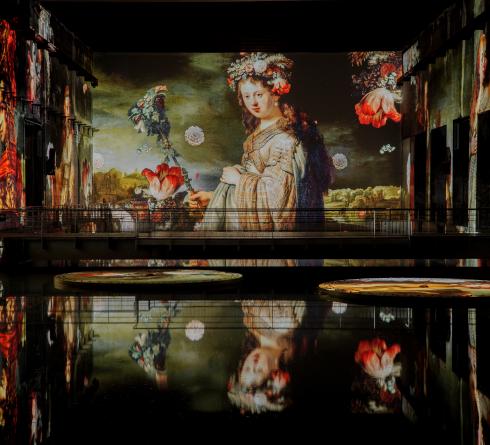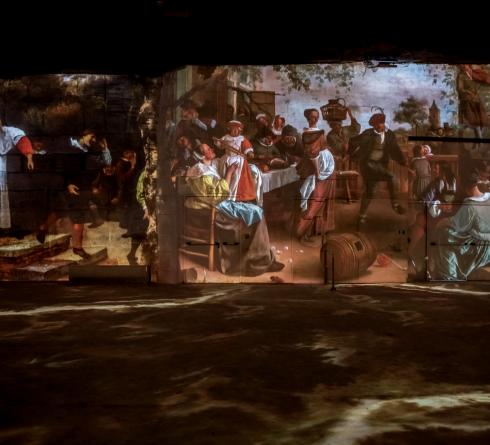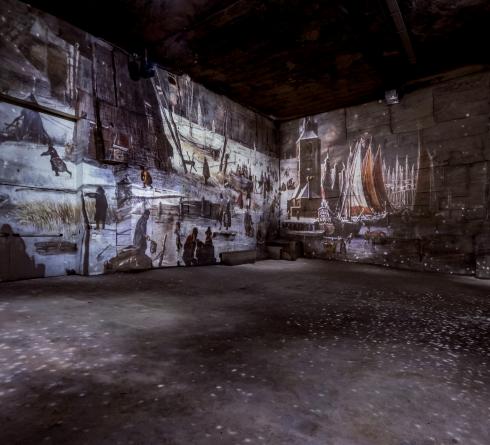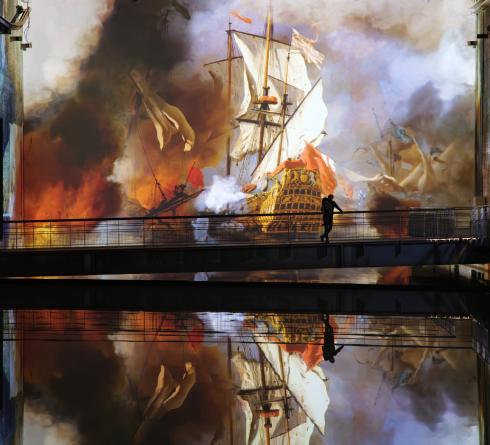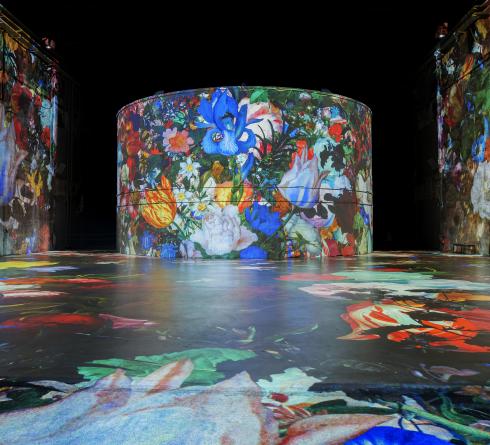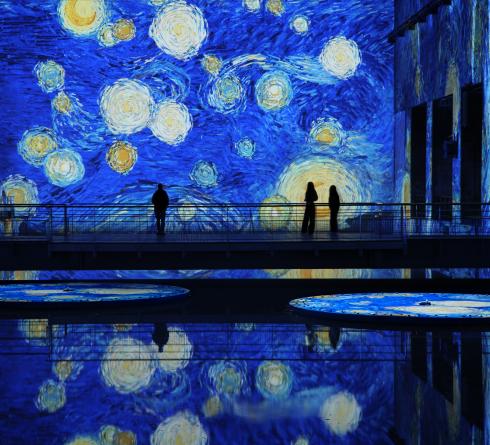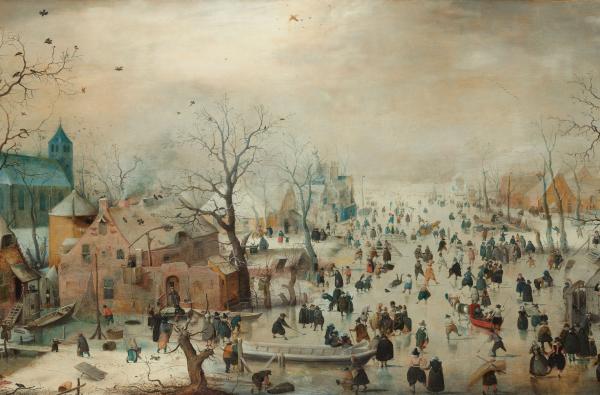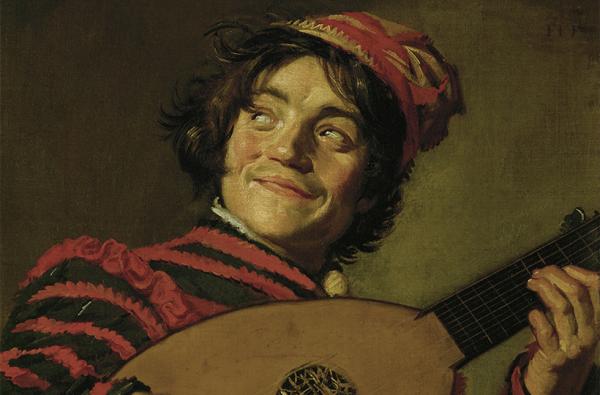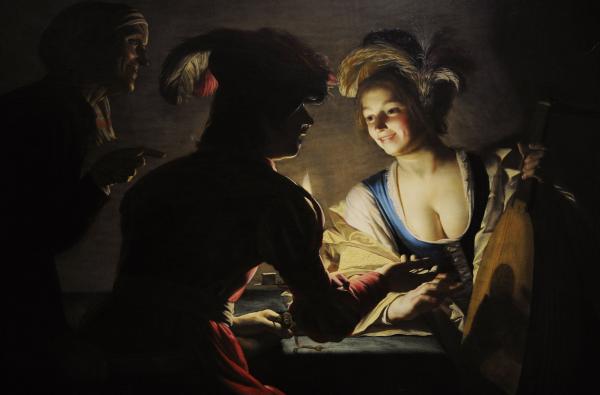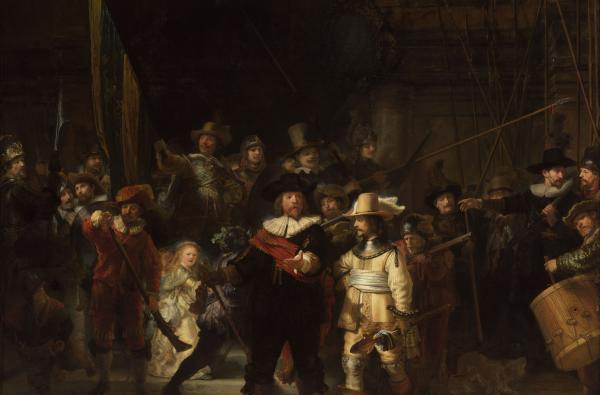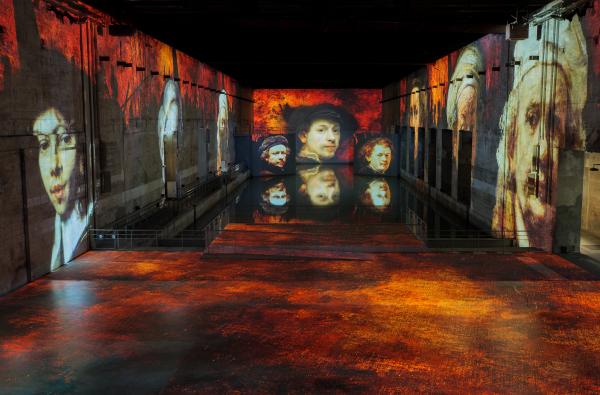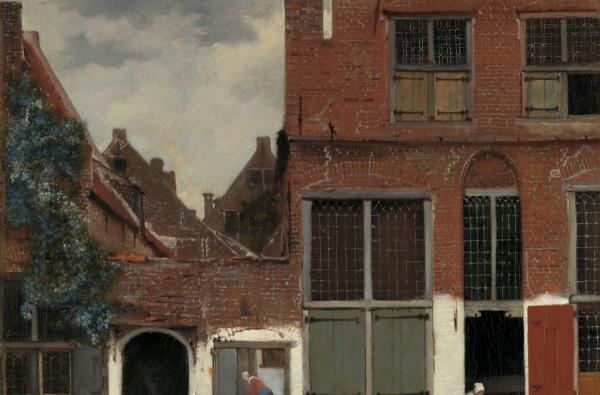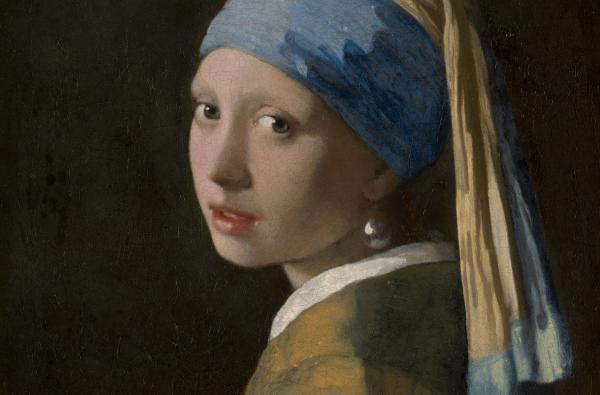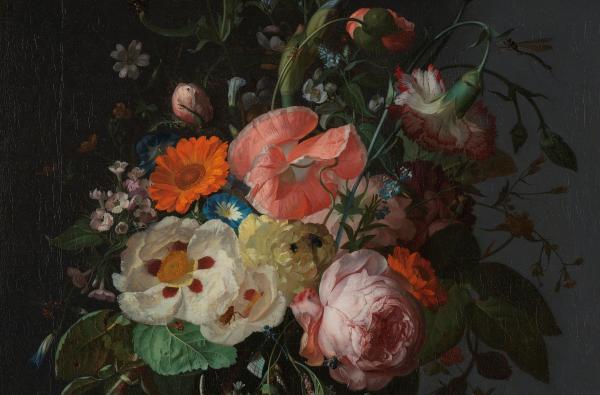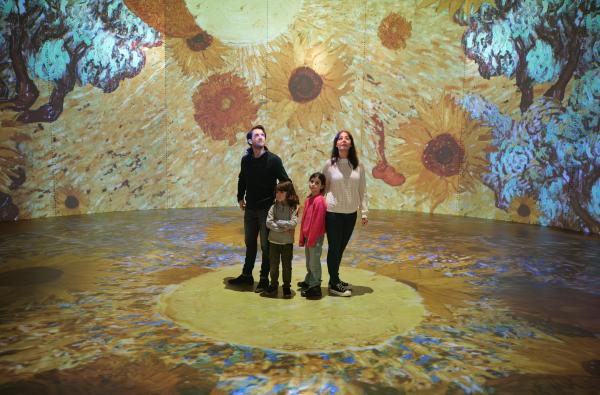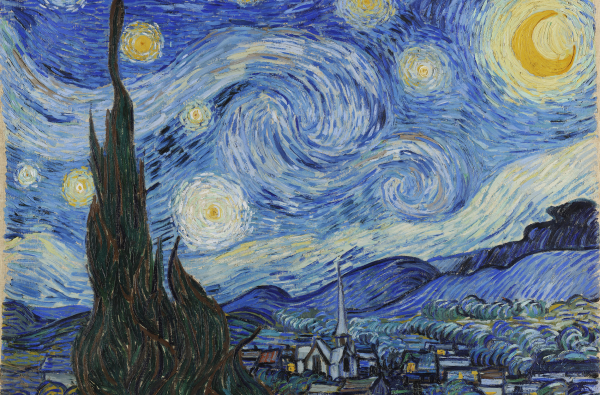From April 12 to 28: "From Vermeer to Van Gogh" from 10am to 2pm and "Tintin" from 2.10pm to 8pm.
Online booking strongly recommended at weekends, on public holidays and during school vacations. Please note that the Bassins are cold so bring something to cover up.
About the exhibition From Vermeer to Van Gogh
Three centuries of Dutch painting
Listen to the playlist of the exhibition
Key works
Click on a work to find out more.
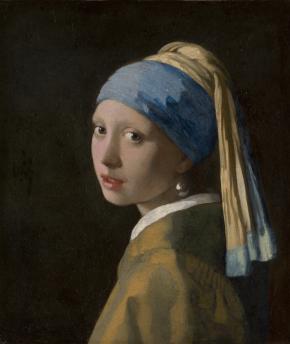
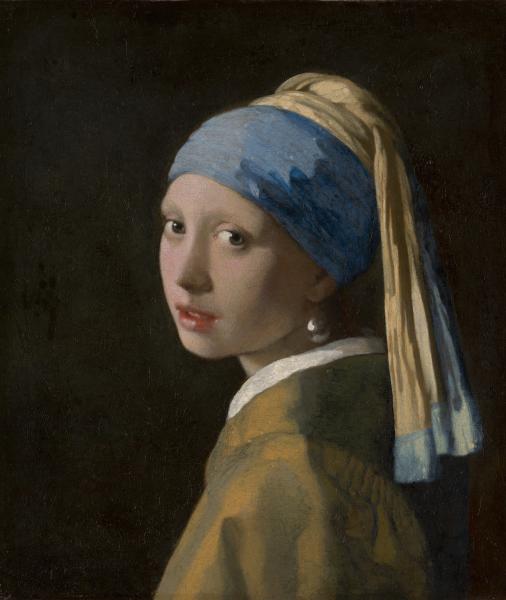
Johannes Vermeer, Girl with a Pearl Earring, 1665, oil on canvas, 44,5 x 39 cm, Mauritshuis, The Hague, Photo: Mauritshuis, The Hague
Girl with a Pearl Earring
With her worried and curious expression, Girl with a Pearl Earring turns to gaze at the viewer. Her natural beauty, combined with a dreamy quality, is disturbing. What is it about the painting that generates this charm and emotion? The answer lies in the graceful outline of her face, with its softness and freshness, the incredible turban, part of which drops artfully behind her neck, and the tiny strokes of intense white, which give the work its unique luminosity: on the outer contours of her lips, in the eyes, and of course on the pearl earring. The drop-shaped pearl, whose size gives it the appearance of a crystal, admirably reflects the young woman’s pale neck.
Girl with a Pearl Earring
Johannes Vermeer , 1665 , oil on canvas , 44,5 x 39 cm , Mauritshuis, The Hague , © Mauritshuis, The Hague
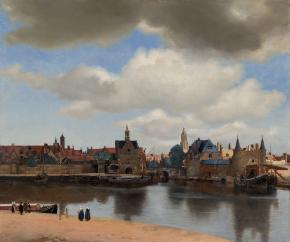
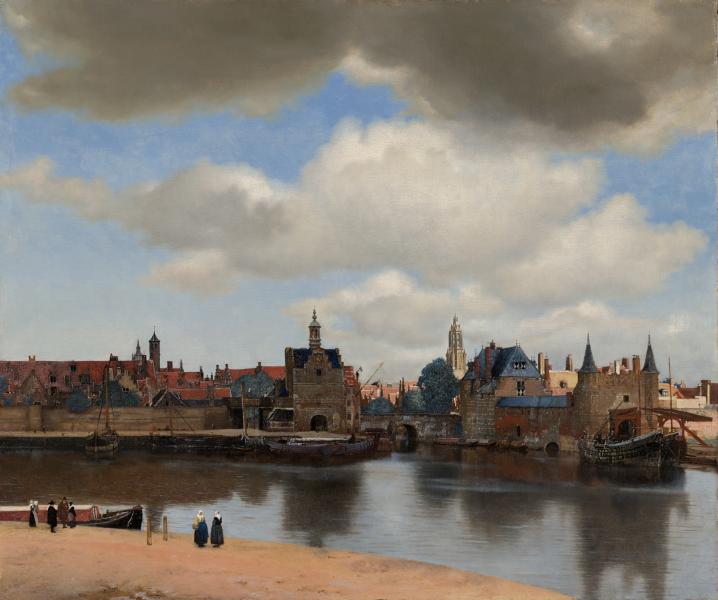
Johannes Vermeer, View of Delft, c.1660-1661, oil on canvas, 96.5 x 115.7 cm, Mauritshuis, The Hague © Mauritshuis, The Hague
View of Delft
When they first saw this picture, nineteenth-century French critics were enthusiastic: it was not a perspective, it was the ‘sun shining over the city after the storm’—a representation of one of the atmospheric phenomena so sought after by the painters Monet and Boudin. Vermeer constructed his picture using coloured elements, in which each stroke formed the architecture: squares, triangles, and diagonals. Van Gogh wrote to his brother Theo: ‘When I read this, I thought of Vermeer’s View of Delft. When one sees it from close to, the townscape in The Hague is incredible, and done with completely different colours from what one would suppose a few steps away.
View of Delft
Johannes Vermeer , c.1660-1661 , oil on canvas , 96,5 x 115,7 cm , Mauritshuis, The Hague , © Mauritshuis, The Hague
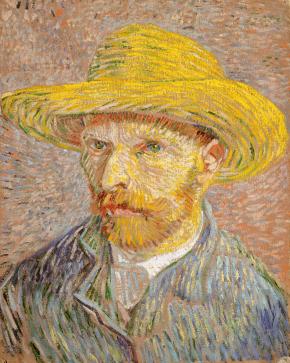
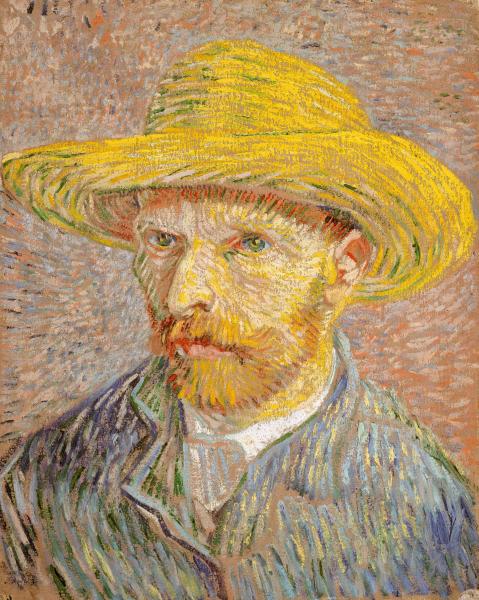
Vincent van Gogh, Self-portrait with straw hat, 1887, oil on canvas, 40.6 x 31.8 cm, Gift of Adélaïde Milton de Groot (1876-1967), 1967, The Metropolitan Museum of Art, New York © CC0 1.0
Self-portrait with straw hat
Van Gogh was born in 1853 in the Netherlands and only started to paint full time at the age of twenty-seven, after failing to make a living at first as an art dealer, then as a pastor. He joined his family in Nuenen, where he produced what is considered his first real work, in around 1885. The years that followed consisted of training and crucial discoveries: in Antwerp he discovered the works of Rubens and Japanese prints, and, in Paris, Impressionism. It was in the French capital that he painted most of his self-portraits, as he could not afford to pay for models.
Self-portrait with straw hat
Vincent van Gogh , 1887 , oil on canvas , 40,6 x 31,8 cm , Gift of Adélaïde Milton de Groot (1876-1967), 1967, The Metropolitan Museum of Art, New York , © CC0 1.0 Universal/ www.metmuseum.org
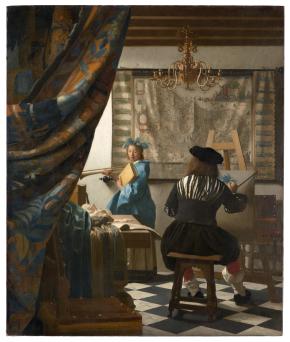
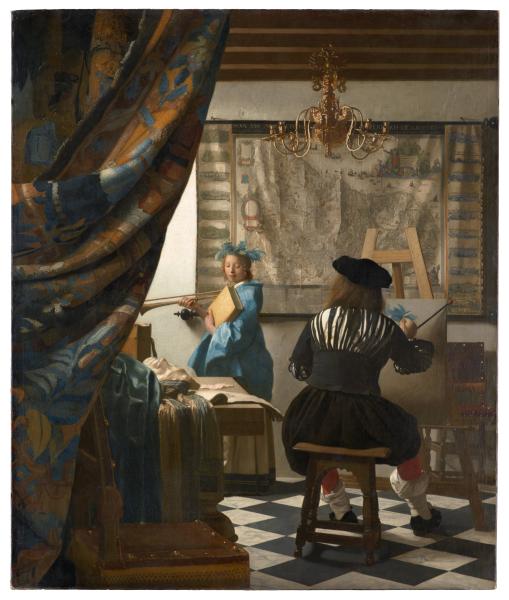
Johannes Vermeer, The Art of Painting, 1666-1668, oil on canvas, 120 x 100 cm, Kunsthistorisches Museum Wien, Photo: akg-images
The Art of Painting
The Art of Painting depicts an unusual scene, but one which is calm and serene, just like Vermeer’ work—even the painting is done silently. The theatre curtain also conveys something else that could apply to his entire oeuvre: Vermeer was an ‘immobile’ man, who never left Delft, who only represented his city, and whose main model was his wife. He painted a reclusive, domestic life, in silence, and which was sometimes disquieting. Each of his scenes obliges the viewer to spy on the figures behind a tapestry: thus we are transformed into voyeurs.
The Art of Painting
Johannes Vermeer , 1666-1668 , oil on canvas , 120 x 100 cm , Kunsthistorisches Museum, Vienne , © akg-images
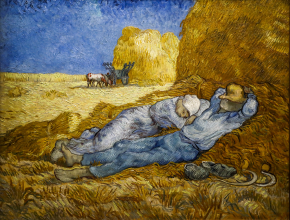
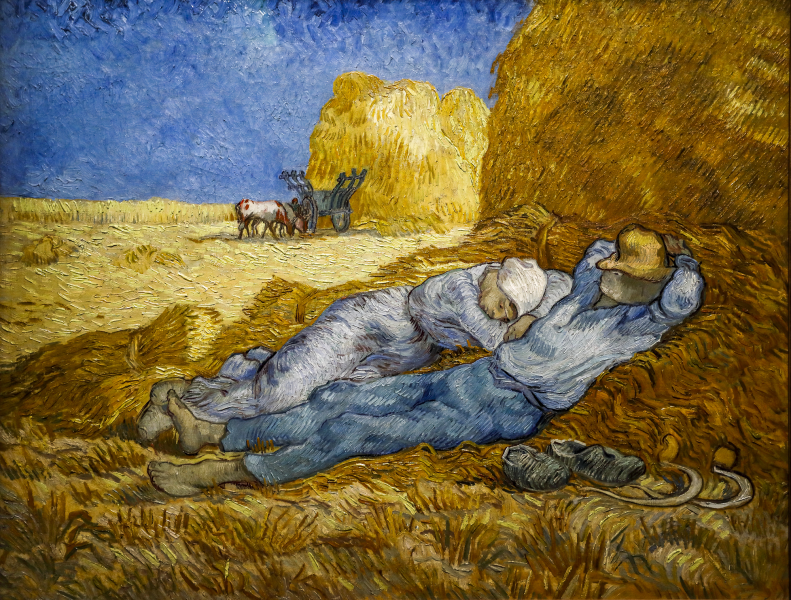
Vincent Van Gogh, The Meridian, 1889-1890, oil on canvas, 73 x 91 cm, musée d'Orsay, Paris, Photo: © Frank Buffetrille. All rights reserved 2023 / Bridgeman Images
The Meridian
Van Gogh was inspired by an engraving that featured The Meridian by the painter Millet, his master and spiritual father. His choice of colours illuminates the couple’s siesta. He applied an intense, deep blue violet in the sky, which he toned down for the peasants’ clothing. Playing on the contrasts, he again used a variety of yellows: a straw yellow for the field completely exposed to the sunlight, compared with an increasingly brown yellow as it approaches the two sleeping people. Serenity emanates from the scene, connected with the well-deserved rest of the labourers, and the couple’s tender proximity.
The Meridian
Vincent van Gogh , 1889-1890 , oil on canvas , 73 x 91 cm , musée d’Orsay, Paris , Frank Buffetrille. All rights reserved 2023 , © Bridgeman Images
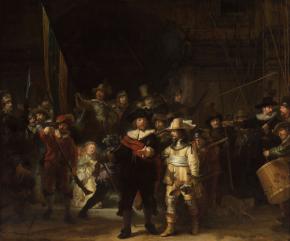

Rembrandt van Rijn, The Night Watch, 1642, oil on canvas, 379,5 x 453,5 cm, Rijksmuseum, Amsterdam, Photo: Rijksmuseum - CC0 1.0
The Night Watch
What is this child doing amidst these soldiers? And these interlocking lances? According to the original title of this large painting, it was a portrait of ‘The Company of Frans Banning Cocq and Willem van Ruytenburch’: hence, this was yet another picture featuring one of the famous bourgeois militias that defended the city of Amsterdam circa 1642, with, in the centre, Captain Cocq, wearing a red scarf, accompanied by his lieutenant. Except, this was a work by Rembrandt, and instead of a rigid and respectable posture, the painter arranged the arquebusiers in a deliberately chaotic way, littered with quirky details, applying his particular form of chiaroscuro, and which gives the whole scene an incredible sense of movement. Rembrandt was not only painting a portrait: he was telling a story. But its real message remains a mystery.
The Night Watch
Rembrandt van Rijn , 1642 , oil on canvas , 379,5 x 453,5 cm , Rijksmuseum, Amsterdam , © Rijksmuseum - CC0 1.0
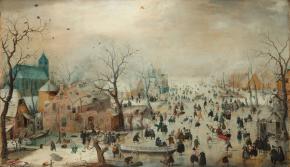
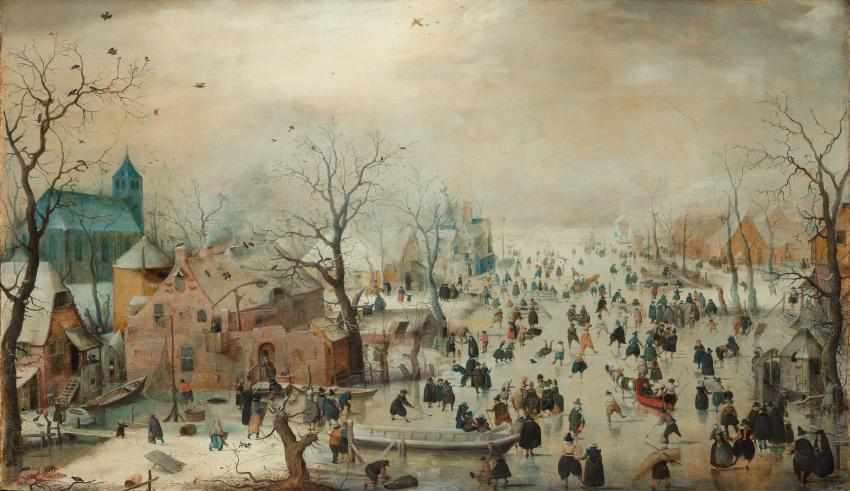
Hendrick Avercamp, Winter Landscape with Skaters, c. 1608, oil on panel, 77.3 cm × 131.9 cm, Rijksmuseum, Amsterdam © Rijksmuseum - CC0 1.0
Winter Landscape with Skaters
What a delightful skating session! The entire town has been invited: there are couples of lovers, two children on a sled, a young man falling over, others sliding around in single file, and a fisherman holding a net, a beggar near a group of bourgeois dressed in their Sunday best … and even two figures who are relieving themselves, believing that they cannot be seen. Nothing escaped the acute and mocking observation of the painter Hendrick Avercamp. Not even the players of ‘kolf’, the ancestor of hockey, about which the French observer, Jean Nicolas de Parival, said: ‘The first person to score a goal wins the money at stake. But most often, the game is only played to find out who will pay for the other players’ drinks’!
Winter Landscape with Skaters
Hendrick Avercamp , c. 1608 , oil on panel , 77,3 x 131,9 cm , Rijksmuseum, Amsterdam , © Rijksmuseum - CC0 1.0
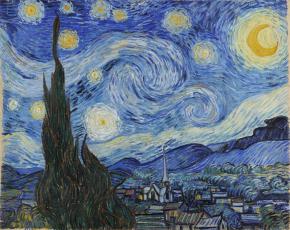
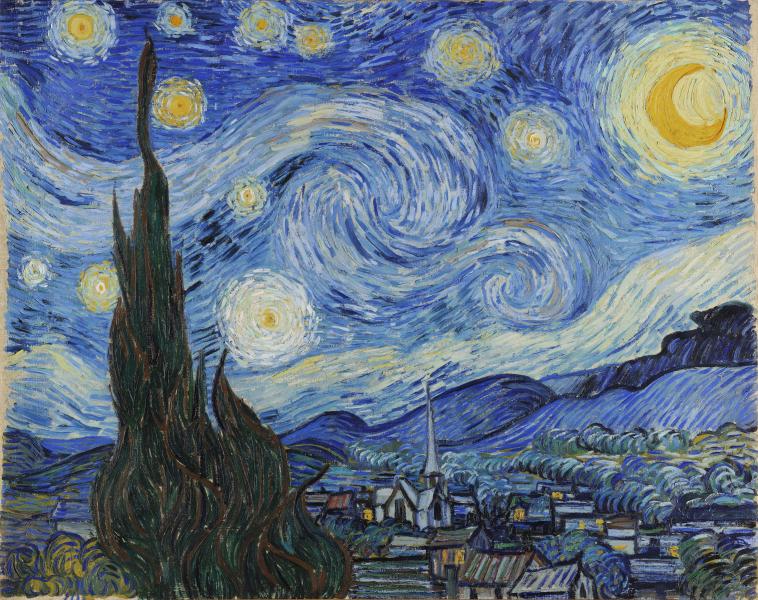
Vincent van Gogh, The Starry Night, 1889, oil on canvas, 73,7 x 92,1 cm, Acquired through the Lillie P. Bliss Bequest (by exchange), Museum of Modern Art, New York, Photo: Bridgeman Images
The Starry Night
Like when he painted a landscape or a bunch of flowers, there was no question of working from memory: Vincent would go to the place and paint on the spot. Legend has it that he attached candles to his hat to light up his canvas.
The Starry Night is a major work from the artist’s Arlesian period. He developed the theme of the ‘cobalt blue field of the night sky’ on a number of occasions.
The Starry Night
Vincent van Gogh , 1889 , oil on canvas , 73,7 x 92,1 cm , Acquired through the Lillie P. Bliss Bequest (by exchange), Museum of Modern Art, New York , © Bridgeman Images
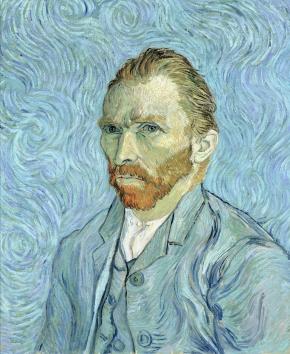
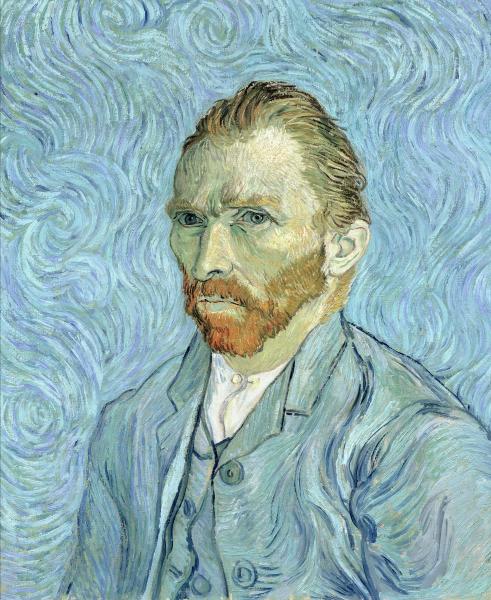
Vincent van Gogh, Self-portrait, 1889, oil on canvas, 65 x 54,2 cm, Gift of Paul and Marguerite Gachet, Dr. Gachet's children, 1949, musée d'Orsay, Paris, Photo: Bridgeman Images
Self-portrait
According to Van Gogh’s letters, he executed the painting at the beginning of September 1889, while he was staying in the Hospice de Saint-Rémy in Provence. Painting helped him to get over his crises: in a letter sent to his brother Theo, he mentioned this self-portrait with its ‘fine blue of the Midi and clothes of light blue’. The light blue colour of the background extends into his jacket … or is it the other way round? To such an extent that the painter is almost an integral part of the background, whose flame-like brushstrokes evoke a world of hallucinations. Placed within this ‘whirlwind’, Van Gogh painted himself as he was, caught up in endless torment.
Self-portrait
Vincent van Gogh , 1889 , oil on canvas , 65 x 54,2 cm , Gift of Paul and Marguerite Gachet, Dr. Gachet's children, 1949, musée d'Orsay, Paris , © Bridgeman Images
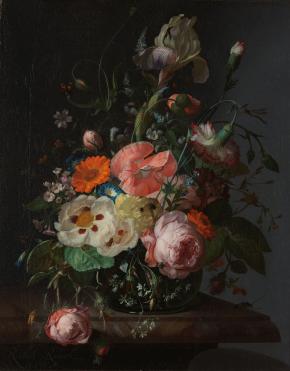
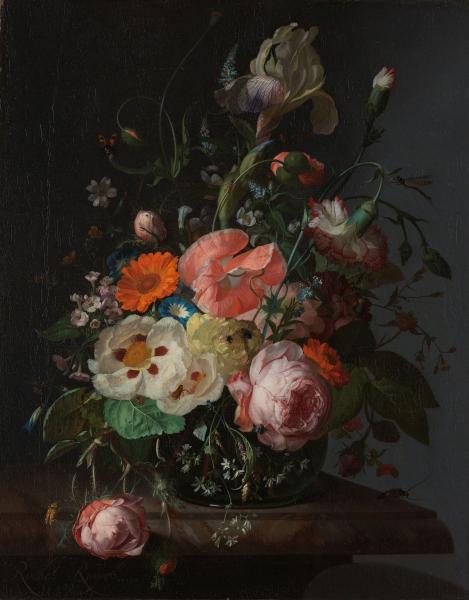
Rachel Ruysch, Still Life with Flowers on a Marble Tabletop, 1716, oil on canvas, 48,5 x 39,5 cm, Rijksmuseum, Amsterdam, Photo: Rijksmuseum - CC0 1.0
Still Life with Flowers on a Marble Tabletop
By specialising and focusing on what they knew how to do, seventeenth-century Dutch painters attained a degree of extreme perfection: in the rendering of the materials, the subtleness of the compositions, and the refinement of the lighting. Still lifes which were at the bottom of the hierarchy of themes, became a sought-after genre in Holland that aimed to create a highly faithful reproduction of reality. The bouquet-of-flowers motif, with its complex and fascinating compositions, reached its apogee at the end of the century, in the work of painters such as Rachel Ruysch. Yet, reality was deceptive, as everything was carefully enhanced by the artist to demonstrate his or her know-how—nothing was natural.
Still Life with Flowers on a Marble Tabletop
Rachel Ruysch , 1716 , oil on canvas , 48,5 x 39,5 cm , Rijksmuseum, Amsterdam , © Rijksmuseum - CC0 1.0
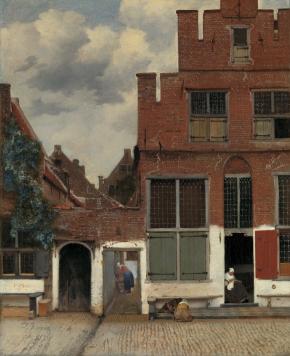
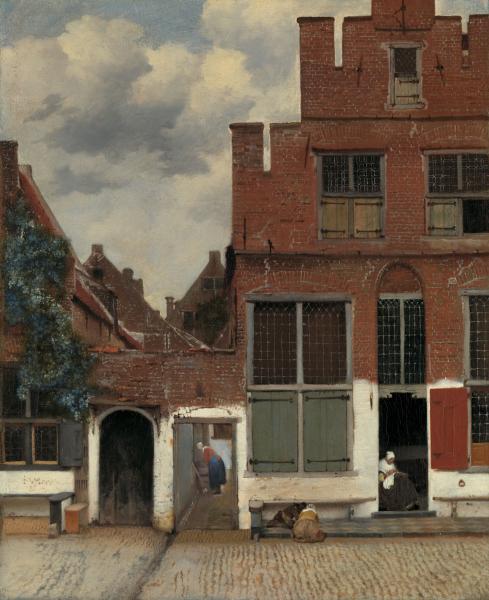
Johannes Vermeer, View of Houses in Delft, Known as ‘The Little Street’, c. 1658, oil on canvas, 54,3 x 44 cm, Rijksmuseum, Amsterdam, Photo: Rijksmuseum - CC0 1.0
View of Houses in Delft, Known as ‘The Little Street’
The Little Street is a small painting that celebrates domestic life. It is a typical view of the old city of Delft: a simple old house under a stormy sky. It is inhabited by four silent presences: a woman sewing in the front doorway, another leaning over a well, and a maid washing down the pavement, helped by a boy. These figures are merely dabs of colour mingled with the maze of architectural elements, because the house is the real subject of the picture: the centre of family life, an expression of order and moral dignity … values cherished by Dutch society at the time.
View of Houses in Delft, Known as ‘The Little Street’
Johannes Vermeer , c. 1658 , oil on canvas , 54,3 x 44 cm , Rijksmuseum, Amsterdam , © Rijksmuseum - CC0 1.0
Explore more
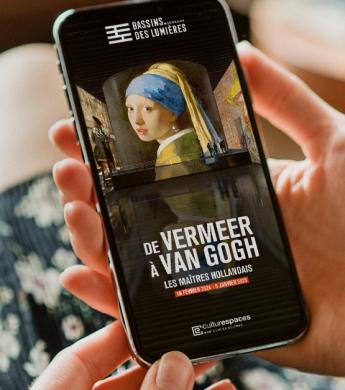
Download our app
The application, available free of charge on iOS and Android, gives commentaries on the works of our current exhibitions. Discover through original anecdotes major works of the exhibition "From Vermeer to Van Gogh, the Dutch Masters".
Discover also the exhibitions "Egyptian Pharaohs" in Atelier des Lumières (Paris) and Carrières des Lumières (Baux-de-Provence) and "From Vermeer to Van Gogh, the Dutch Masters" in Bassins des Lumières (Bordeaux).

